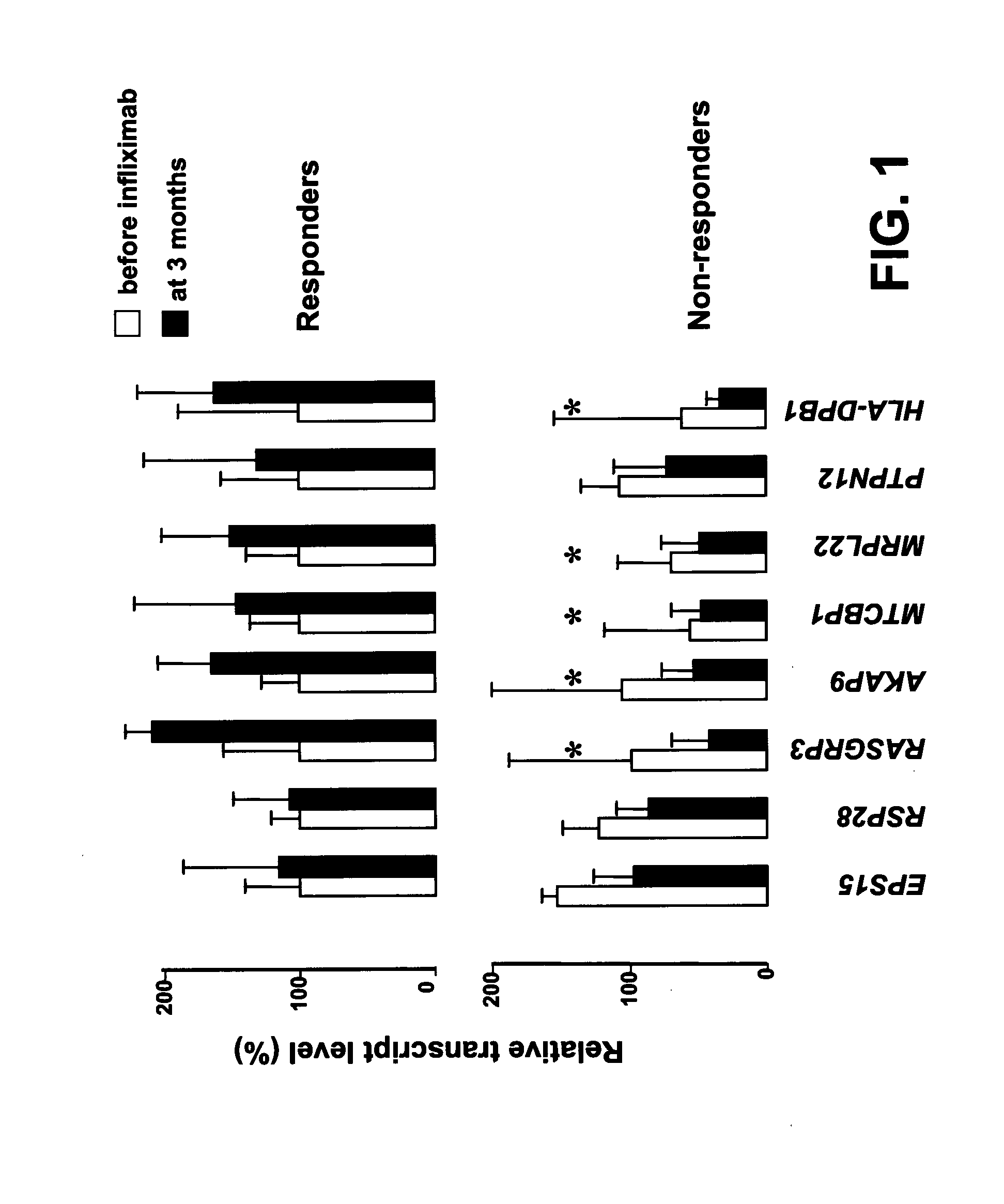Method for Predicting Responsiveness to TNF Alpha Blocking Agents
a technology of alpha blocking agent and response prediction, which is applied in the field of predicting the response to a treatment with a tnf blocking agent, can solve the problems of high cost, unpredictable efficacy of any given tba in a given patient, and limited number of such studies, so as to achieve reliable prediction of the response
- Summary
- Abstract
- Description
- Claims
- Application Information
AI Technical Summary
Benefits of technology
Problems solved by technology
Method used
Image
Examples
example
Gene Profiling in White Blood Cells Predicts Infliximab Responsiveness in Rheumatoid Arthritis
[0073]As indicators of responsiveness to TNFα blocking agent are lacking in rheumatoid arthritis, the inventors have used gene profiling in peripheral blood mononuclear cells to predict a good vs poor response to infliximab. Thirty three patients with an active disease (Disease Activity Score 28 >5.1) which resisted weekly metothrexate therapy were further given infliximab at baseline, weeks 2 and 6, and every 8th week. The patients were categorized as responders whenever a change of Disease Activity Score 28 ≧1.2 was obtained at 3 months. Mononuclear cell RNAs were collected at baseline and at 3 months from responders and non-responders. The baseline RNAs were hybridized to a microarray of ca. 10.000 non-redundant human cDNAs. In 6 responders and 7 non-responders, 41 mRNAs identified by microarray were expressed as a function of the response to treatment and an unsupervised hierarchical cl...
PUM
| Property | Measurement | Unit |
|---|---|---|
| Fraction | aaaaa | aaaaa |
| Fraction | aaaaa | aaaaa |
| Fraction | aaaaa | aaaaa |
Abstract
Description
Claims
Application Information
 Login to View More
Login to View More - R&D
- Intellectual Property
- Life Sciences
- Materials
- Tech Scout
- Unparalleled Data Quality
- Higher Quality Content
- 60% Fewer Hallucinations
Browse by: Latest US Patents, China's latest patents, Technical Efficacy Thesaurus, Application Domain, Technology Topic, Popular Technical Reports.
© 2025 PatSnap. All rights reserved.Legal|Privacy policy|Modern Slavery Act Transparency Statement|Sitemap|About US| Contact US: help@patsnap.com

